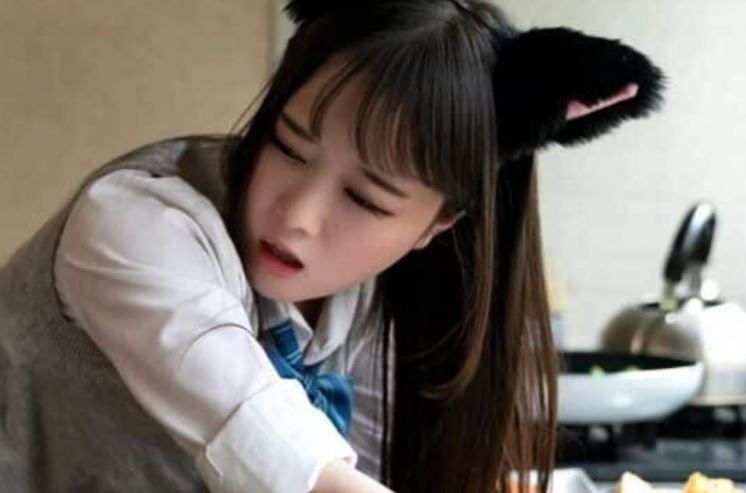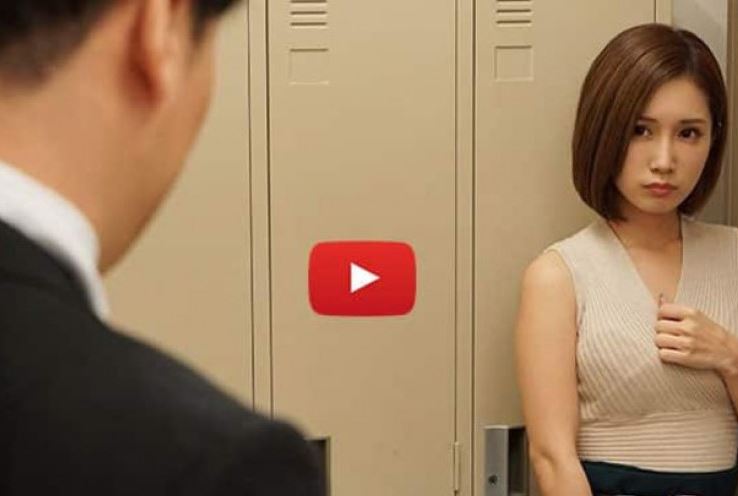Video Bokeh Japanese Word Origin Full
Bokeh is a term widely recognized in the fields of photography and videography, referring to the aesthetic quality of the blur produced in the out-of-focus areas of an image. It is a concept that has gained significant popularity among photographers and filmmakers due to its ability to create a sense of depth, draw attention to the subject, and add a professional touch to visual compositions. The word “bokeh” itself originates from the Japanese language, which makes it a fascinating subject of study in terms of linguistic history and artistic application.
In photography, achieving bokeh is often considered a sign of technical expertise, as it requires the careful selection of camera settings, lens choice, and subject positioning. The effect is commonly used in portrait photography, macro photography, and even in some landscape shots where isolating a subject from the background enhances the overall composition. The quality of bokeh is influenced by factors such as aperture size, lens construction, and the shape of the aperture blades within the lens.
Videographers also use bokeh to create cinematic effects, especially in scenes where the focus needs to be on a specific subject while the background remains beautifully blurred. This technique is frequently seen in movies, commercials, and music videos, where the visual appeal of an image is just as important as the narrative it conveys.
Beyond its technical aspects, bokeh has also become a symbol of artistic expression, allowing creators to experiment with depth of field and light in innovative ways. The way different lenses render bokeh varies significantly, with some producing smooth, creamy blurs and others generating distinct, circular patterns of light. This variability makes bokeh an exciting and subjective element of photography, where different photographers may prefer different styles based on their artistic vision.
In this discussion, we will explore the origins of the term “bokeh,” its use in both photography and videography, and the techniques used to achieve it. Additionally, we will look at its cultural significance and how it has influenced modern visual storytelling. By understanding bokeh in its entirety, we can appreciate not just its technical aspects but also the artistic and linguistic depth that it brings to the world of photography and cinematography.
Etymology of “Bokeh”
The term “bokeh” originates from the Japanese word “ボケ” (boke), which means “blur” or “haze.” It is derived from the verb “ボケる” (bokeru), which translates to “to become blurry” or “to be out of focus.” The word has long been used in the Japanese language to describe something that is not sharp or clearly defined, both in a literal and figurative sense.
In English, “bokeh” was popularized in the late 1990s, largely due to photography circles that sought to describe the aesthetic quality of out-of-focus areas in an image. The term was first widely introduced to English-speaking audiences through photography magazines, particularly Photo Techniques magazine, which published articles explaining the concept and its significance in visual composition.
One of the key figures in bringing the term to Western photography communities was Mike Johnston, a writer and editor for Photo Techniques. He suggested adding the “h” at the end of “boke” to clarify its pronunciation for English speakers, ensuring it was spoken correctly as “boh-keh” rather than “boke” (which could be mispronounced as “boke” in English). This modification helped establish the term as a standard way to describe the soft, aesthetically pleasing blur seen in many professional photographs.
The Japanese language often uses “boke” in other contexts as well. For example, in Japanese comedy, the term “boke” refers to the role of a forgetful or absent-minded person in a comedic duo, contrasting with the “tsukkomi,” who plays the straight man. This linguistic connection highlights how “boke” is associated with a lack of clarity, whether in thought or in vision.
Over time, “bokeh” has evolved from being just a technical term to a widely appreciated artistic concept. Today, it is recognized internationally, appearing in photography guides, camera advertisements, and even smartphone marketing materials. The appreciation for bokeh has also influenced lens manufacturing, with many high-end lenses specifically designed to produce smoother, more visually appealing out-of-focus areas.
By understanding the etymology of “bokeh,” we gain insight into how language evolves alongside technological and artistic advancements. The term’s journey from a simple Japanese word to a globally recognized concept reflects the cross-cultural exchange of ideas in the world of visual arts.
Bokeh in Photography
In photography, bokeh is one of the most sought-after effects, as it enhances images by adding a sense of depth and directing the viewer’s attention toward the subject. The way a lens renders bokeh depends on various factors, including aperture size, lens design, and optical characteristics.
The most common way to achieve bokeh is by using a wide aperture (low f-stop number), such as f/1.4, f/1.8, or f/2.8. A wider aperture allows more light to enter the lens, creating a shallower depth of field, which results in a more pronounced blur in the background or foreground. This is particularly useful in portrait photography, where isolating the subject from the background helps create a professional and visually appealing effect.
The shape of the out-of-focus light points in bokeh is influenced by the aperture blades of the lens. Lenses with more rounded aperture blades produce smoother, more natural-looking bokeh, while lenses with fewer or more angular blades can create hexagonal or polygonal light patterns. Some high-end lenses are specifically designed to produce “creamy” bokeh, making them popular among professional photographers.
Bokeh is often associated with artistic photography, where the goal is to create a dreamy or cinematic feel. It is particularly effective in nighttime or low-light photography, where light sources such as streetlights or fairy lights become soft, glowing orbs in the background. Many photographers use this technique creatively to add an element of magic and depth to their images.
Additionally, bokeh plays a crucial role in macro photography, where the background is often heavily blurred to highlight small details in close-up subjects. In wildlife photography, it can also be used to separate the subject from distracting elements in the background, making the composition cleaner and more visually striking.
Overall, bokeh is not just a technical effect but an artistic tool that allows photographers to manipulate focus, depth, and composition in visually compelling ways. Whether capturing portraits, landscapes, or macro shots, understanding and controlling bokeh can elevate the quality of a photograph, making it more professional and aesthetically pleasing.
Bokeh in Videography
Bokeh is not limited to photography; it plays a crucial role in videography as well. Filmmakers and videographers use bokeh to create a cinematic look, directing the viewer’s focus toward the subject while blurring out distracting backgrounds. This technique is commonly used in movies, commercials, and music videos to add depth, emotion, and a sense of professionalism to the visual composition.
One of the most famous uses of bokeh in film is during close-up shots or dialogue scenes where the background is intentionally blurred to keep the focus on the character’s facial expressions. By isolating the subject from its surroundings, videographers can evoke stronger emotional responses from the audience. This technique is often used in romantic, dramatic, or suspenseful scenes to enhance storytelling.
The quality of bokeh in videography depends on several factors, including the camera’s sensor size, the lens used, and the aperture setting. Full-frame and larger sensor cameras generally produce more pleasing bokeh compared to smaller sensor cameras because they allow for a shallower depth of field. Similarly, using prime lenses with wide apertures (e.g., f/1.4 or f/2.0) results in smoother, more visually appealing bokeh.
Another key factor in achieving cinematic bokeh is lighting. Videographers often use backlighting or side lighting to create beautiful bokeh effects with artificial lights, street lamps, or natural light sources. This technique is particularly effective in nighttime shooting, where the bokeh effect turns small points of light into soft, glowing orbs, adding a magical and dreamlike quality to the footage.
Many modern cameras and smartphones now offer “cinematic mode” or “portrait video mode,” which simulates bokeh effects using software. While these digital effects can mimic the look of real optical bokeh, experienced filmmakers still prefer using high-quality lenses and manual settings to achieve the most natural and aesthetically pleasing results.
Ultimately, bokeh in videography is a powerful artistic tool that enhances the visual storytelling process. Whether creating a dramatic close-up, a romantic scene, or a dreamy atmosphere, understanding how to control and manipulate bokeh can make a significant difference in the overall impact of a video.
Achieving Bokeh Effect
Creating a beautiful bokeh effect requires the right combination of equipment, settings, and technique. While bokeh is naturally produced by the camera lens and aperture settings, there are specific steps photographers and videographers can take to enhance the effect.
Use a Wide Aperture
The most effective way to achieve bokeh is by using a wide aperture, such as f/1.2, f/1.4, f/1.8, or f/2.8. A wider aperture results in a shallower depth of field, allowing the subject to remain in focus while the background or foreground is blurred.
Choose the Right Lens
Not all lenses produce the same quality of bokeh. Prime lenses with a fast aperture (e.g., 50mm f/1.4, 85mm f/1.8, or 135mm f/2.0) are excellent choices for achieving smooth and creamy bokeh. Telephoto lenses also enhance the effect by compressing the background and increasing subject separation.

Increase Subject-Background Distance
The distance between the subject and the background significantly affects the bokeh effect. The further the background is from the subject, the more blurred it will appear. This technique is particularly useful in portrait photography and videography.
Use Proper Lighting
Light sources in the background, such as streetlights, candles, or fairy lights, can create beautiful bokeh highlights. Placing these light sources at a distance allows them to appear as soft, glowing circles or shapes, adding an artistic touch to the composition.
Select the Right Background
A background with small points of light or intricate textures can enhance the bokeh effect. Shooting in environments like cityscapes at night, forests with sunlight filtering through leaves, or indoors with decorative lights can create visually appealing bokeh patterns.
Adjust Camera Settings
Using a longer focal length (e.g., 85mm, 135mm, or 200mm) enhances the bokeh effect by compressing the background and making it blurrier. Additionally, setting the camera to manual focus allows greater control over which elements remain sharp and which become blurred.
By mastering these techniques, photographers and videographers can create stunning images and videos with beautiful bokeh effects, enhancing their visual storytelling and artistic compositions.
Cultural Influence
The concept of bokeh extends beyond technical photography and videography; it has influenced artistic styles, design trends, and even popular culture worldwide. The word “bokeh” has been adopted in creative communities as a symbol of beauty, softness, and aesthetic quality.
In Japan, the idea of “boke” is deeply embedded in artistic traditions, including traditional painting, calligraphy, and poetry, where the use of negative space and soft transitions plays a crucial role in composition. Japanese cinematographers have also been pioneers in using bokeh to create visually poetic and emotionally resonant film scenes.

Globally, bokeh has influenced everything from graphic design to fashion photography. Many branding and advertising campaigns use bokeh effects to create luxurious and dreamy visuals, often associated with elegance and romance. Social media platforms, such as Instagram and Pinterest, have further popularized the trend, with photographers and influencers frequently using bokeh to enhance the aesthetic appeal of their images.
The rise of smartphone photography has also contributed to the mainstream popularity of bokeh. Many smartphone manufacturers have developed portrait modes that simulate bokeh effects using artificial intelligence and computational photography, making the effect accessible to casual photographers.
In digital art and video games, bokeh is often used to create a sense of depth and immersion. Game developers use bokeh-inspired blur effects to enhance realism and cinematic quality in graphics, making scenes appear more dynamic and visually engaging.
Overall, bokeh has become more than just a technical photography term; it represents a universal appreciation for visual aesthetics and artistic expression. Its widespread influence in various creative fields highlights its importance in modern visual culture.
Bokeh is a fascinating and essential concept in both photography and videography, contributing to the aesthetic quality and emotional impact of visual media. Its origins in the Japanese language reflect a cultural appreciation for subtle beauty and artistic expression, making it a unique and meaningful term in the world of imaging.
From its technical application in cameras and lenses to its influence on global art and design, bokeh remains a powerful tool for photographers, filmmakers, and digital creators. Understanding how to achieve and manipulate bokeh can significantly enhance the quality of images and videos, whether for professional work or personal artistic projects.
As technology advances, the accessibility of bokeh effects continues to grow, with smartphones, AI-driven software, and high-quality lenses making it easier than ever to achieve stunning results. However, the artistic essence of bokeh remains timeless—capturing light, depth, and emotion in a way that connects with viewers on a profound level.
Ultimately, bokeh is more than just a blur; it is an artistic choice, a storytelling device, and a testament to the beauty of photography and cinematography. Whether used to create dreamy portraits, cinematic movie scenes, or abstract light compositions, bokeh remains a beloved and essential element in the world of visual arts.
EN -Telegram Viral Video Museum
Bu Guru Salsa Viral 5 Menit
Bu Guru Salsa Full Body 27 Video
The Phenomenon of the Video Viral Syakirah How One Clip Sparked Global Attention
Understanding the “GirlyLana Leak” Implications, Reactions, and Lessons for Online Content Creators
Everything You Need to Know About the “Funsizedasian Leaked” Controversy A Comprehensive Guide
Unraveling the “fmottrn Leaked” Phenomenon Everything You Need to Know


 | Sitemap | Mail
| Sitemap | Mail